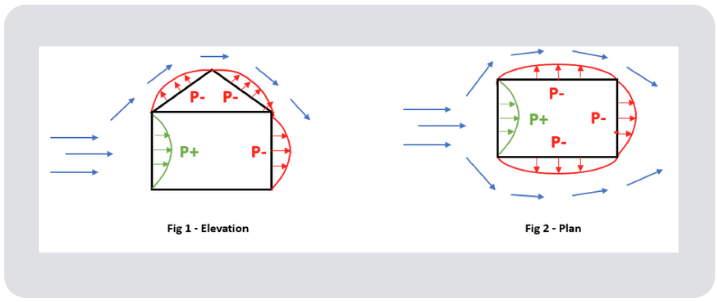HARNESSING THE WIND PART 1: THE SCIENCE BEHIND WIND POWER
In prior articles on ventilation systems (article links below), we have talked extensively about the importance of using wind power for a Natural Ventilation System. It is equally important to harness wind power for powered ventilation systems. In this two-part article, we are going to dive deeper into the science behind wind power and how to use it advantageously for a Powered Ventilation System.
Science of Wind Power
Let’s start with the science behind how wind power works. We all know that when it is windy, if we open doors or windows on opposite sides of a building, air will flow through it. This movement of air is actually the result of positive and negative pressures on the building created by wind. The force or velocity of the air striking the side of the building facing the wind creates a positive pressure. As the air moves over and around the building it accelerates, which causes areas of negative pressure on the sides and top of the building. As the air flow separates from the top and sides, it also creates an area of negative pressure in the back of the building. Figures 1 and 2 illustrate the creation of these positive and negative pressure areas by wind.

To maximize creation of positive and negative pressure areas by wind, it is important to know the predominate wind direction. The NOAA website provides US maps of wind speed and direction. From these maps, you can determine the predominate wind direction for the hottest months of the year in your area.
In Harnessing the Wind: Part 2, we will discuss how to use the science of wind power to enhance the benefits of a Powered Ventilation System.
Prior Eldridge Articles:

